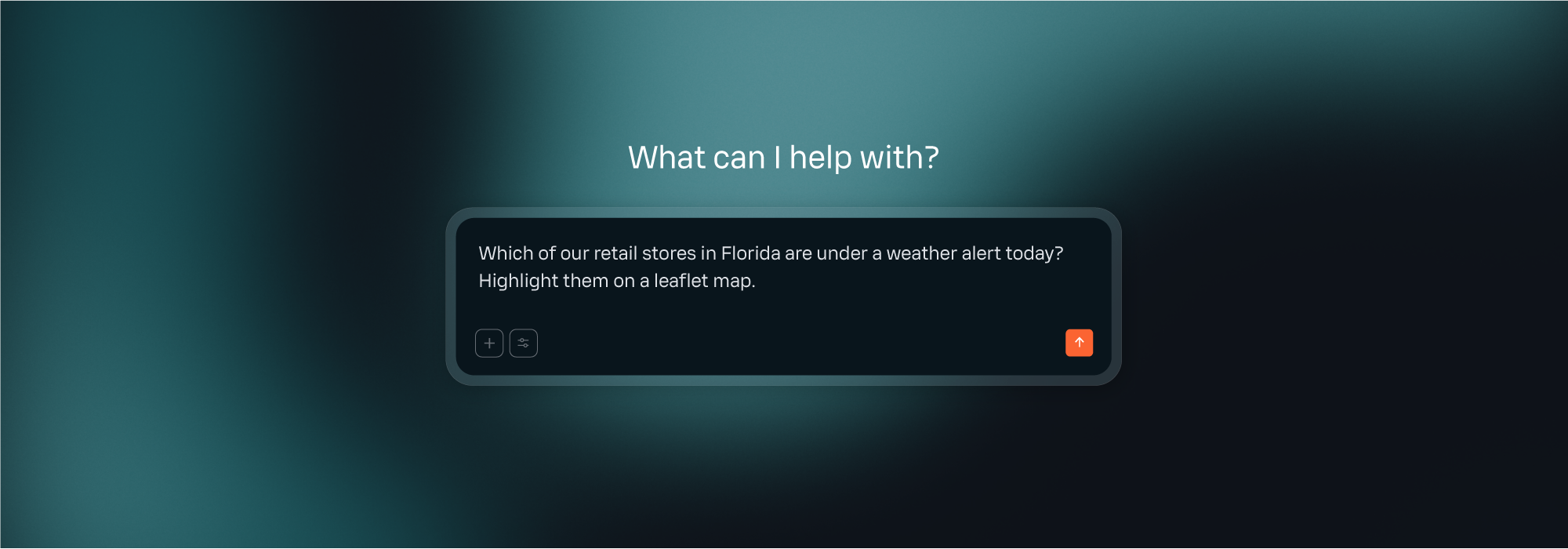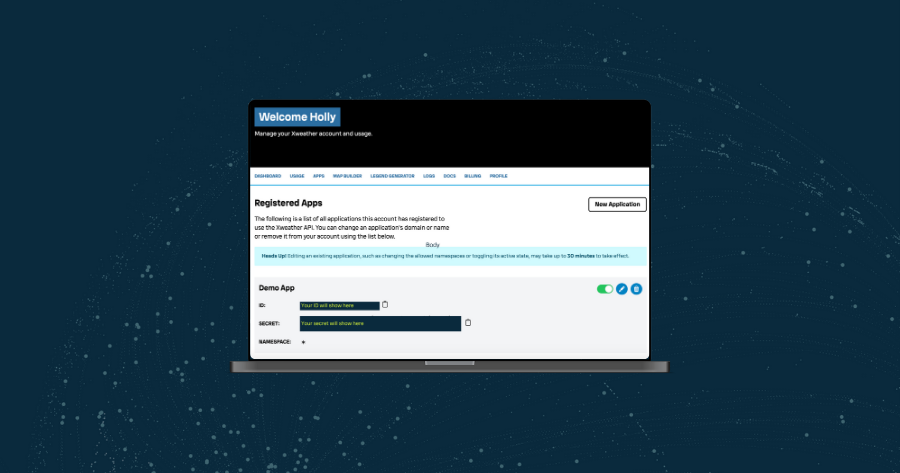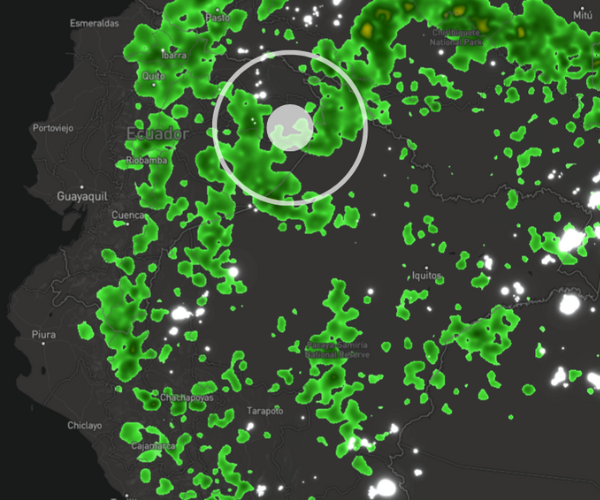LLMs and AI agents now have a new way to reason about weather – with weather data trusted by NASA, Fortune 100, and hundreds of other organizations.
Model Context Protocol, or simply MCP, is a specification developed by Anthropic that enables Large Language Models (LLMs) such as Claude, ChatGPT, and Gemini to interact securely with third-party services through a consistent interface.
For users building custom AI agents to account for the influence of weather on business scenarios, Xweather MCP opens the door to powerful new possibilities. It gives AI agents the weather awareness and analytical tools needed to deliver reliable, context-rich answers.
Or, if you’re a developer integrating with LLMs, you can use Xweather MCP server to make your integrations weather-aware.
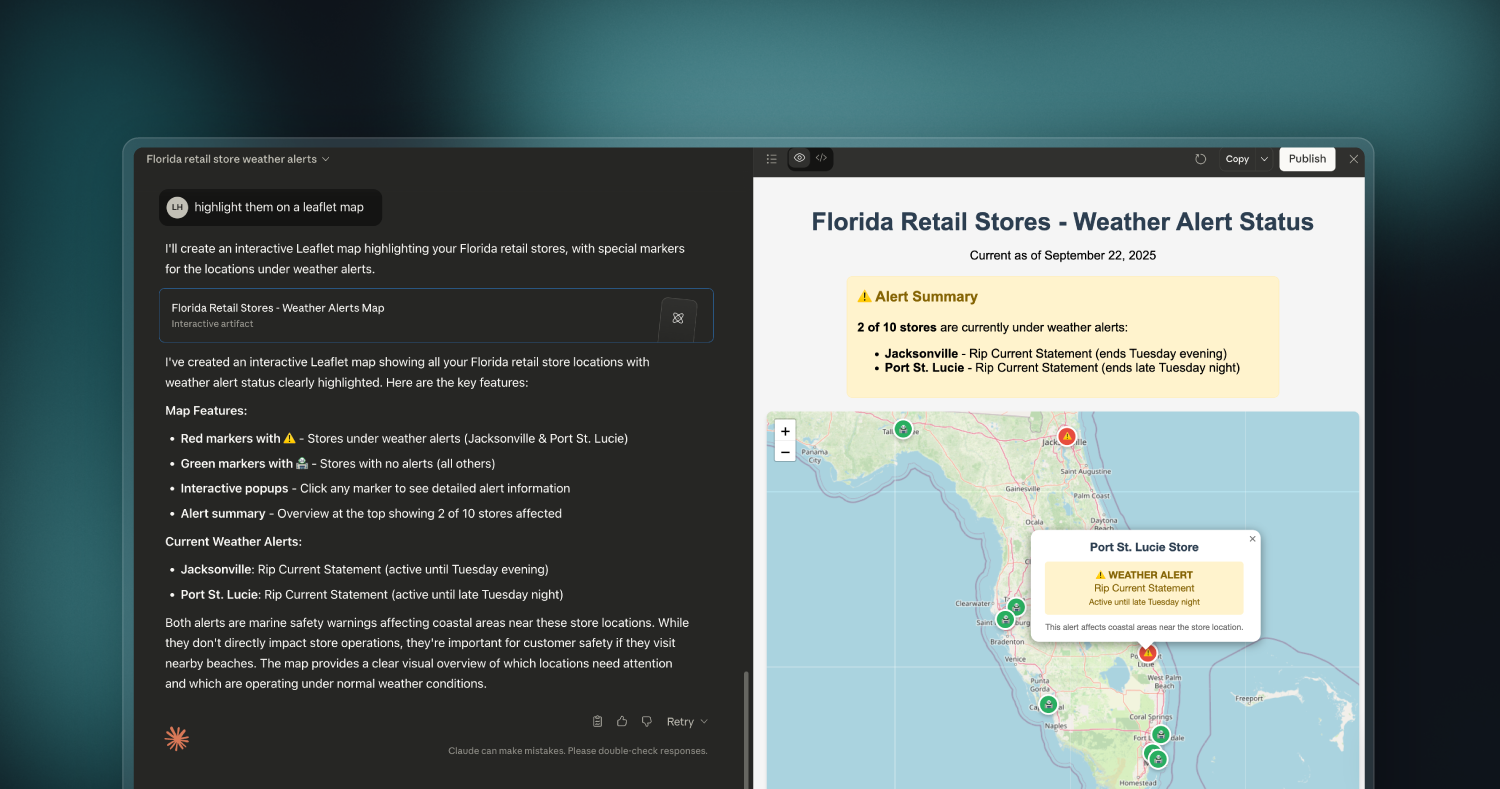
Advanced weather data for your AI agents
Consider a user request that requires multiple data inputs, such as: “Assess tomorrow’s weather risk for our Dallas–Houston and Dallas–Austin delivery routes. Highlight time periods or regions where wind, heavy rain, or lightning could delay transport.”
Normally, an agent would rely only on publicly available weather data discoverable through web search, certainly not accurate or context-specific enough to solve the case efficiently. This is where a weather MCP makes all the difference—enabling the agent to access reliable and quality-controlled weather intelligence in a single, integrated workflow.
In this case, Claude accessed Xweather’s forecast datasets to evaluate tomorrow’s conditions along the route. The MCP fetched forecast data along the route, analyzed precipitation timing, checked for any weather alerts in effect for tomorrow, and retrieved a detailed hourly forecast to identify likely windows of disruption. All insights are powered by Xweather’s verified, quality-controlled data, ensuring the agent’s assessment is accurate and dependable.
The Xweather MCP gives you access to sophisticated contextual insight that complex queries require, such as:
Historical comparisons and weather trend analysis
Real-time monitoring across multiple locations
Correlation between weather patterns and business performance metrics
Precise precipitation timing using combined minutely, hourly, and daily forecasts
Detailed lightning detection and historical strike analysis
Meteogram generation in supported AI agents (such as Claude.ai)
*Exact capabilities depend on your Xweather API and maps subscription.
Ready to see this in action? Connect the Xweather MCP to your Claude account in under 5 minutes.
Weather MCP for developers
If you are building an agent that talks to OpenAI, you can plug in the Xweather MCP server to give it real-world weather intelligence. No manual API wiring, no endless JSON schemas to maintain.
(Great) reasons to deploy MCP for weather:
Reduce integration friction: Let models call pre-approved tools instead of building bespoke API wrappers.
Stay current: Every response is sourced from live observational and forecast data.
Ship faster: Opinionated authentication, filtering, and rate management defaults mean you can prototype quickly.
OpenAI’s Responses API and Playground both support MCPs natively. That means your agent can call remote tools, like Xweather’s, just by pointing to our MCP server URL.
When the model needs a forecast, lightning data, or storm impacts, it calls the right MCP tool behind the scenes. You do not have to manage any of the plumbing yourself!
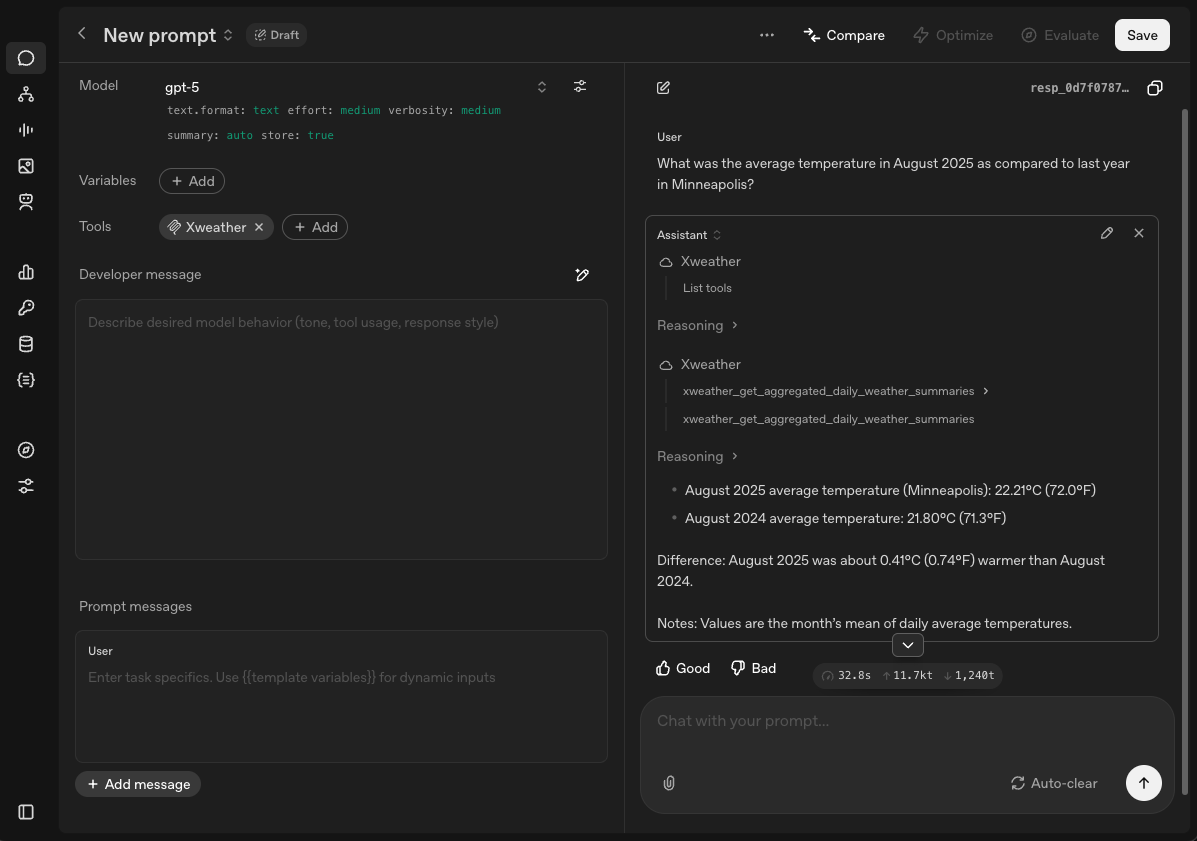
Using the Xweather MCP within the OpenAI Playground.
Weather MCP for data analysis
With the Xweather MCP, weather data turns from just an input to a crucial part of the reasoning process. AI agents can analyze, compare, and act on weather data in ways that directly impact real-world decisions. Once the Xweather MCP is connected, agents can perform complex tasks such as:
Instantly validate insurance claims by comparing reported conditions against historical weather data.
Discover hidden correlations—like how temperature drops drive 23% higher hot beverage sales.
Correlate weather conditions with business metrics such as sales, supply chain delays, or energy demand.
Pinpoint precipitation timing using blended minutely, hourly, and daily forecasts.
The Xweather MCP lets LLMs move beyond describing the weather to truly understanding its impact to improve your decision-making with the data you can rely on, be it historical conditions, real-time weather, or forecasts.
Get started
If you're already using the Xweather API, you’re ready to get started. The Xweather MCP server works with your existing API credentials.
Not an API user yet? Start your free trial.
We’ve published developer documentation that includes:
Example MCP queries (e.g., Claude function call patterns)
Supported tools and parameter references
Field definitions, constraints, and usage tips
